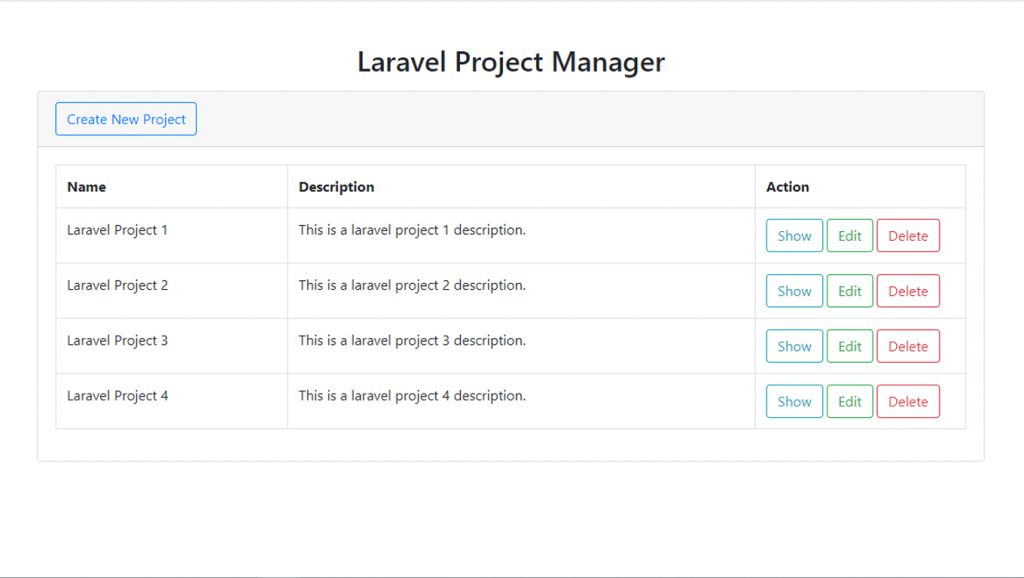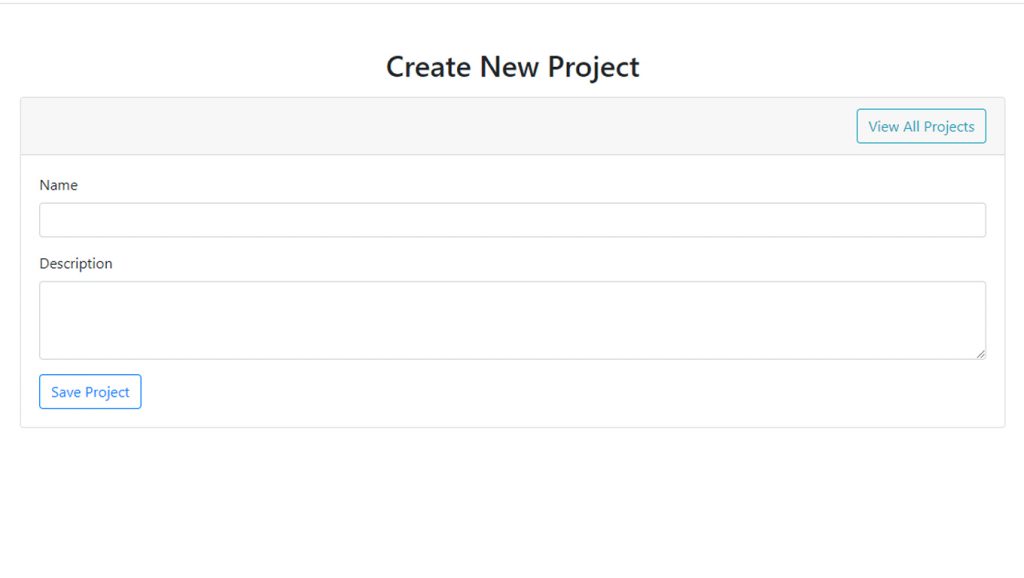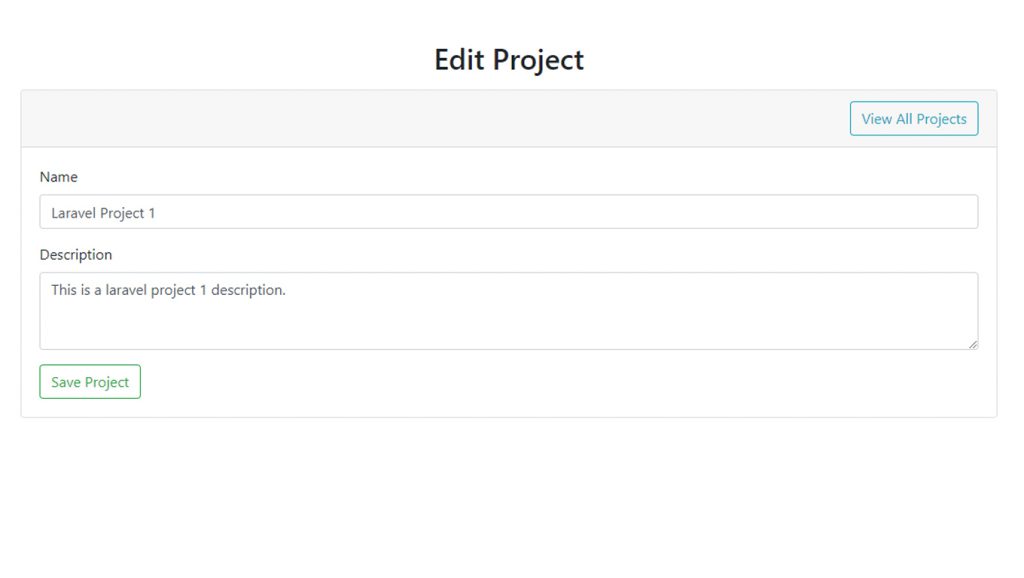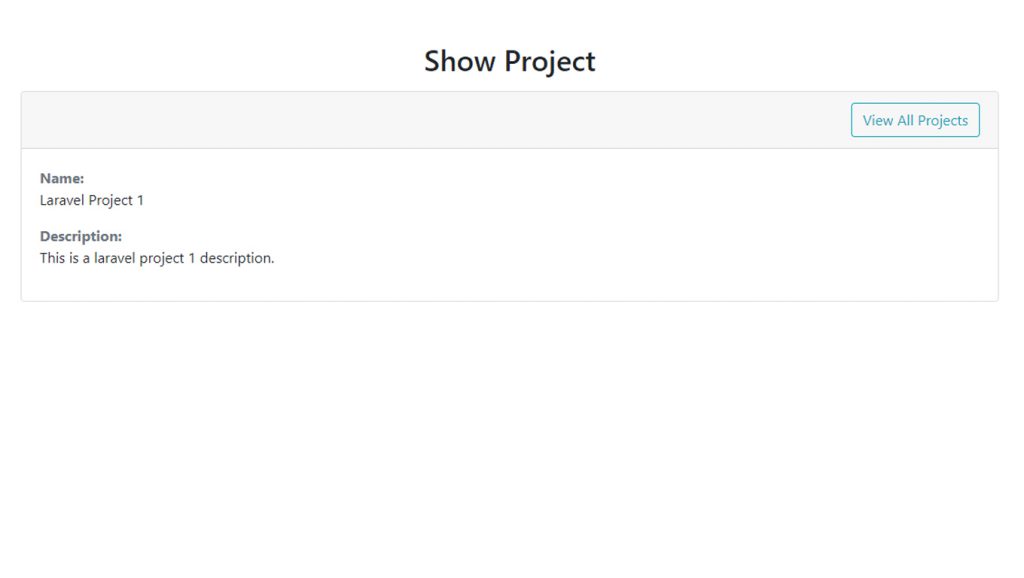Contents
Introduction:
Hi there, today we will be creating a simple CRUD application. CRUD is an acronym for CREATE, READ, UPDATE, DELETE. The four basic functions in any type of programming.
We will be using Laravel 12. Laravel is a free, open-source PHP Web Framework intended for the development of web applications following the MVC (Model-View-Controller) architectural pattern. It is designed to make developing web apps faster and easier by using built-in features.
Prerequisite:
Before we proceed, we must update the composer, laravel installer, node, and npm on our local environment:
- PHP >= 8.2
- Node >= 18.18.2
- NPM >= 9.8.1
- Composer >= 2.8.6
- Laravel Installer >= 5.12.2
If you are having trouble updating the Composer follow these steps:
composer self-update
If you are having trouble updating the Laravel Installer follow these steps:
composer global remove laravel/installer
composer global update
composer global require laravel/installer
Step 1: Install Laravel 12
Run this command on Terminal or CMD to install Laravel:
laravel new laravel-11-crud
Follow these choices:


Step 2: Set Database Configuration
We set up the database configuration during our installation. We can change it by going inside the project root folder, opening the file .env, and put the configuration for the database.
.env
DB_CONNECTION=mysql
DB_HOST=127.0.0.1
DB_PORT=3306
DB_DATABASE=your database name(laravel_12_crud)
DB_USERNAME=your database username(root)
DB_PASSWORD=your database password(root)
Step 3: Create Model and Database Migration
Model – it is a class that represents a database table.
Migration – like version control for the database that allows us to modify and share database schema to your team.
Execute this command on the Terminal or CMD to create a model and migration:
php artisan make:model Project --migration
After this command, you will find one file in this path “database/migrations” and put the code below on the migration file.
<?php
use Illuminate\Database\Migrations\Migration;
use Illuminate\Database\Schema\Blueprint;
use Illuminate\Support\Facades\Schema;
return new class extends Migration
{
/**
* Run the migrations.
*/
public function up(): void
{
Schema::create('projects', function (Blueprint $table) {
$table->id();
$table->string('name');
$table->text('description');
$table->timestamps();
});
}
/**
* Reverse the migrations.
*/
public function down(): void
{
Schema::dropIfExists('projects');
}
};
Run the migration by executing the migrate Artisan command:
php artisan migrate
Step 4: Create A Resource Controller
Resource Controller is a controller that handles all HTTP requests stored by your application.
Execute this command to create a resource controller:
php artisan make:controller ProjectController --resource
This command will generate a controller at “app/Http/Controllers/ProjectController.php”. It contains methods for each of the available resource operations. Open the file and insert these codes:
app/Http/Controllers/ProjectController.php
<?php
namespace App\Http\Controllers;
use Illuminate\Http\Request;
use App\Models\Project;
class ProjectController extends Controller
{
/**
* Display a listing of the resource.
*/
public function index()
{
$projects = Project::get();
return view('projects.index',['projects' => $projects]);
}
/**
* Show the form for creating a new resource.
*/
public function create()
{
return view('projects.create');
}
/**
* Store a newly created resource in storage.
*/
public function store(Request $request)
{
request()->validate([
'name' => 'required|max:255',
'description' => 'required',
]);
$project = new Project();
$project->name = $request->name;
$project->description = $request->description;
$project->save();
return redirect()->route('projects.index')
->with('success','Project saved successfully!');
}
/**
* Display the specified resource.
*/
public function show(string $id)
{
$project = Project::find($id);
return view('projects.show', ['project' => $project]);
}
/**
* Show the form for editing the specified resource.
*/
public function edit(string $id)
{
$project = Project::find($id);
return view('projects.edit', ['project' => $project]);
}
/**
* Update the specified resource in storage.
*/
public function update(Request $request, string $id)
{
request()->validate([
'name' => 'required|max:255',
'description' => 'required',
]);
$project = Project::find($id);
$project->name = $request->name;
$project->description = $request->description;
$project->save();
return redirect()->route('projects.index')
->with('success','Project updated successfully!');
}
/**
* Remove the specified resource from storage.
*/
public function destroy(string $id)
{
Project::destroy($id);
return redirect()->route('projects.index')
->with('success','Project deleted successfully!');
}
}
Step 5: Register a Resourceful Route
After creating a resource controller, register a resourceful route.
routes/web.php
<?php
use Illuminate\Support\Facades\Route;
use App\Http\Controllers\ProjectController;
Route::get('/', function () {
return view('welcome');
});
Route::resource('projects', ProjectController::class);
This single route will create multiple routes to handle the CRUD actions on the resource.
Step 6: Create Blade Files
Blade is the simple but powerful templating engine in laravel. blade view files have a .blade.php file extension and are usually stored in the “resources/views/” folder.
Create a folder named “projects” inside the following path “resources/views/”. Inside the “projects” folder create the following blade files:
- layout.blade.php
- index.blade.php
- show.blade.php
- create.blade.php
- edit.blade.php
After creating the blade files, insert the code below:
resources/views/projects/layout.blade.php
<!DOCTYPE html>
<html>
<head>
<title>Laravel Project Manager</title>
<link href="https://cdn.jsdelivr.net/npm/bootstrap@5.0.2/dist/css/bootstrap.min.css" rel="stylesheet" integrity="sha384-EVSTQN3/azprG1Anm3QDgpJLIm9Nao0Yz1ztcQTwFspd3yD65VohhpuuCOmLASjC" crossorigin="anonymous">
<script src="https://cdn.jsdelivr.net/npm/bootstrap@5.0.2/dist/js/bootstrap.bundle.min.js" integrity="sha384-MrcW6ZMFYlzcLA8Nl+NtUVF0sA7MsXsP1UyJoMp4YLEuNSfAP+JcXn/tWtIaxVXM" crossorigin="anonymous"></script>
</head>
<body>
<div class="container">
@yield('content')
</div>
</body>
</html>
resources/views/projects/index.blade.php
@extends('projects.layout')
@section('content')
<div class="container">
<h2 class="text-center mt-5 mb-3">Laravel Project Manager</h2>
<div class="card">
<div class="card-header">
<a class="btn btn-outline-primary" href="{{ route('projects.create') }}">
Create New Project
</a>
</div>
<div class="card-body">
@if ($message = Session::get('success'))
<div class="alert alert-success">
<b>{{ $message }}</b>
</div>
@endif
<table class="table table-bordered">
<tr>
<th>Name</th>
<th>Description</th>
<th width="240px">Action</th>
</tr>
@foreach ($projects as $project)
<tr>
<td>{{ $project->name }}</td>
<td>{{ $project->description }}</td>
<td>
<form action="{{ route('projects.destroy',$project->id) }}" method="POST">
<a
class="btn btn-outline-info"
href="{{ route('projects.show',$project->id) }}">
Show
</a>
<a
class="btn btn-outline-success"
href="{{ route('projects.edit',$project->id) }}">
Edit
</a>
@csrf
@method('DELETE')
<button type="submit" class="btn btn-outline-danger">Delete</button>
</form>
</td>
</tr>
@endforeach
</table>
</div>
</div>
</div>
@endsection
resources/views/projects/show.blade.php
@extends('projects.layout')
@section('content')
<div class="container">
<h2 class="text-center mt-5 mb-3">Show Project</h2>
<div class="card">
<div class="card-header">
<a class="btn btn-outline-info float-right" href="{{ route('projects.index') }}">
View All Projects
</a>
</div>
<div class="card-body">
<b class="text-muted">Name:</b>
<p>{{$project->name}}</p>
<b class="text-muted">Description:</b>
<p>{{$project->description}}</p>
</div>
</div>
</div>
@endsection
resources/views/projects/create.blade.php
@extends('projects.layout')
@section('content')
<div class="container">
<h2 class="text-center mt-5 mb-3">Create New Project</h2>
<div class="card">
<div class="card-header">
<a class="btn btn-outline-info float-right" href="{{ route('projects.index') }}">
View All Projects
</a>
</div>
<div class="card-body">
@if ($errors->any())
<div class="alert alert-danger">
<ul>
@foreach ($errors->all() as $error)
<li>{{ $error }}</li>
@endforeach
</ul>
</div>
@endif
<form action="{{ route('projects.store') }}" method="POST">
@csrf
<div class="form-group">
<label for="name">Name</label>
<input type="text" class="form-control" id="name" name="name">
</div>
<div class="form-group">
<label for="description">Description</label>
<textarea class="form-control" id="description" rows="3" name="description"></textarea>
</div>
<button type="submit" class="btn btn-outline-primary mt-3">Save Project</button>
</form>
</div>
</div>
</div>
@endsection
resources/views/projects/edit.blade.php
@extends('projects.layout')
@section('content')
<div class="container">
<h2 class="text-center mt-5 mb-3">Edit Project</h2>
<div class="card">
<div class="card-header">
<a class="btn btn-outline-info float-right" href="{{ route('projects.index') }}">
View All Projects
</a>
</div>
<div class="card-body">
@if ($errors->any())
<div class="alert alert-danger">
<ul>
@foreach ($errors->all() as $error)
<li>{{ $error }}</li>
@endforeach
</ul>
</div>
@endif
<form action="{{ route('projects.update',$project->id) }}" method="POST">
@csrf
@method('PUT')
<div class="form-group">
<label for="name">Name</label>
<input type="text" class="form-control" id="name" name="name" value="{{ $project->name }}">
</div>
<div class="form-group">
<label for="description">Description</label>
<textarea class="form-control" id="description" rows="3" name="description">{{ $project->description }}</textarea>
</div>
<button type="submit" class="btn btn-outline-success mt-3">Save Project</button>
</form>
</div>
</div>
</div>
@endsection
Step 7: Run the Application
After finishing the steps above, you can now run your application by executing the code below:
php artisan serve
After successfully running your app, open this URL in your browser:
http://127.0.0.1:8000/projects
Screenshots:
Laravel 12 Crud App (project index page):

Laravel 12 Crud App (project create page):

Laravel 12 Crud App (project edit page):

Laravel 12 Crud App (project show page):





